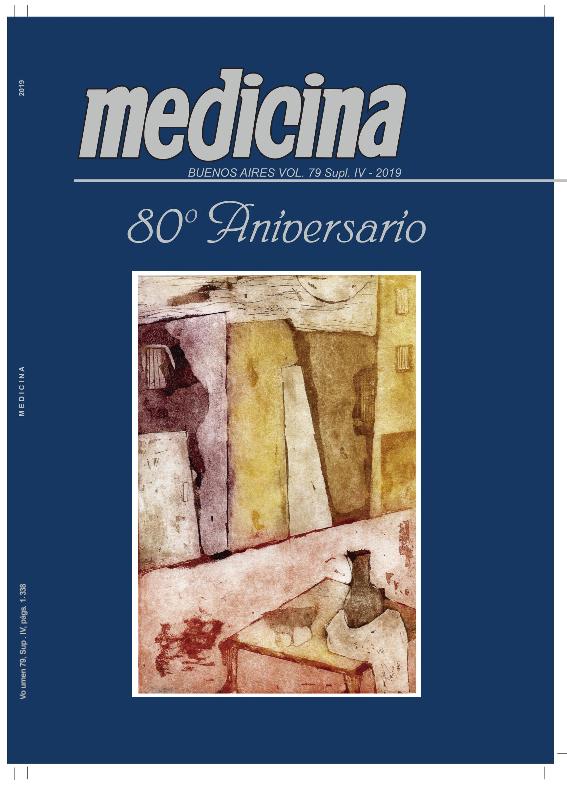Evento
Mechanisms of neuronal degeneration induced by the cyanotoxin β-N-methylamino-L-alanine (BMAA)
Soto, Tamara Belen ; de Los Santos, Elisa Beatriz
; de Los Santos, Elisa Beatriz ; Buzzi, Edgardo David
; Buzzi, Edgardo David ; Rotstein, Nora Patricia
; Rotstein, Nora Patricia ; German, Olga Lorena
; German, Olga Lorena ; Politi, Luis Enrique
; Politi, Luis Enrique
 ; de Los Santos, Elisa Beatriz
; de Los Santos, Elisa Beatriz ; Buzzi, Edgardo David
; Buzzi, Edgardo David ; Rotstein, Nora Patricia
; Rotstein, Nora Patricia ; German, Olga Lorena
; German, Olga Lorena ; Politi, Luis Enrique
; Politi, Luis Enrique
Tipo del evento:
Reunión
Nombre del evento:
LXIV Reunión Anual de la Sociedad Argentina de Investigación Clínica; LI Reunión Anual de la Asociación Argentina de Farmacología Experimental; XXI Reunión Anual de la Sociedad Argentina de Biología; XXXI Reunión Anual de la Sociedad Argentina de Protozoología; IX Reunión Anual de la Asociación Argentina de Nanomedicinas y VI Reunión Científica Regional de la Asociación Argentina de Ciencia y Tecnología de Animales de Laboratorio
Fecha del evento:
13/11/2019
Institución Organizadora:
Sociedad Argentina de Investigación Clínica;
Asociación Argentina de Farmacología Experimental;
Sociedad Argentina de Biología;
Sociedad Argentina de Protozoología;
Asociación Argentina de Nanomedicinas;
Asociación Argentina de Ciencia y Tecnología de Animales de Laboratorio;
The Histochemical Society;
Título de la revista:
Medicina (Buenos Aires)
Editorial:
Fundación Revista Medicina
ISSN:
0025-7680
e-ISSN:
1669-9106
Idioma:
Inglés
Clasificación temática:
Resumen
The non-proteic aminoacid BMAA is a cyanotoxin released by many cyanobacteria occurring in most dams and water resources around the world. Its chronic intake has been linked with neurodegenerative diseases, like amyotrophic lateral sclerosis (ALS), Parkinson and Alzheimer diseases. We showed that BMAA affects retinal neurons and Muller glial cell viability in vitro. Here we investigated the signaling pathway involved in BMAA deleterious effects on cultured photoreceptors and amacrine neurons, its effects on axonal architecture and whether it affects other non-retinal neuronal types. Pure rat retinal neuronal cultures and the neuronal-like, PC12 cell line, cultured in chemically defined media to promote differentiation, were treated with 400 nM and 1 μM BMAA, respectively, for three days. Neuronal cultures were pretreated with MK-801, an N-methyl-D-aspartate (NMDA) receptor antagonist. Cell death was evaluated by DAPI staining and axonal outgrowth by immunocytochemical methods. Pretreatment with MK-801 significantly prevented the increase in the percentage of pyknotic or fragmented nuclei induced by BMAA in amacrine neurons. BMAA enhanced axonal outgrowth in neurons. We then analyzed BMAA effects on PC12 cells at two different stages of differentiation, evaluated morphologically and by anti-ß III tubulin expression. PC12 cell differentiation increased with time in culture, reaching 52 and 77 % at 7 and 12 days, respectively. BMAA increased similarly the percentage of cell death at both differentiation stages, from 33 in controls to 58 % in BMAA-treated cultures. Noteworthy, BMAA also promoted axonal outgrowth in PC12 cells, while simultaneously reducing ß III tubulin levels. These results suggest that BMAA provokes degeneration and axonal changes in different neuronal types, activating NMDA receptors to promote amacrine cell death, and identify BMAA as a potential inducer of neurodegenerative damages, with its consequent deleterious effects on human health.
Palabras clave:
BMAA
,
APOPTOSIS
,
RETINA
,
PC12
Archivos asociados
Licencia
Identificadores
Colecciones
Eventos(INIBIBB)
Eventos de INST.DE INVEST.BIOQUIMICAS BAHIA BLANCA (I)
Eventos de INST.DE INVEST.BIOQUIMICAS BAHIA BLANCA (I)
Citación
Mechanisms of neuronal degeneration induced by the cyanotoxin β-N-methylamino-L-alanine (BMAA); LXIV Reunión Anual de la Sociedad Argentina de Investigación Clínica; LI Reunión Anual de la Asociación Argentina de Farmacología Experimental; XXI Reunión Anual de la Sociedad Argentina de Biología; XXXI Reunión Anual de la Sociedad Argentina de Protozoología; IX Reunión Anual de la Asociación Argentina de Nanomedicinas y VI Reunión Científica Regional de la Asociación Argentina de Ciencia y Tecnología de Animales de Laboratorio ; Mar del Plata; Argentina; 2019; 177-177
Compartir



